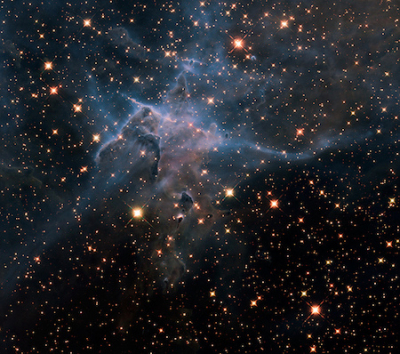
Every star is a giant, bright ball of hot gas. Ever wondered how the stars form and how they die eventually? How about learning a bit about the stellar world?
One septillion stars, that’s almost the number of stars estimated to exist in our universe, Our Milky Way alone contains more than 100 billion stars. The nearest star to us is our Sun. Every star is a giant ball of hot gas. They are the building block of galaxies. "We are made of star stuff,” said noted astronomer Carl Sagan. It means that whatever we are composed of whatever our physical bodies are made of the raw materials that make up our physical bodies were created from the matter from long-extinguished stars. How about learning a bit about the stellar world?
Stars and their birth
Stars are made of huge balls of hot gas it is largely composed of hydrogen and small parts of helium and a few other elements. The star is held together because of its own gravity.
Every star goes through its own unique life cycle. Stars are born within hinge clouds of dust and gas called molecular clouds and are scattered throughout the galaxies. The gas in the molecular clouds clump together, forming high-density pockets, and often collide with each other. With each collision, more matter gets added to it and its mass grows. The gravitational force becomes stronger. The clumps of gas and dust then collapse under their own gravitational attraction. As this happens, the material heats up because of the friction and leads to the formation of a protostar which is also called the baby star. The set of stars newly formed from molecular clouds are called stellar clusters.
Life of a star
The energy of a protostar is derived from the heat released by its initial collapse. As years pass by, the high pressure and temperature inside the core of the star lead to a nuclear fusion reaction, where the nuclei of hydrogen atoms combine together to form helium. The energy that gets released post-nuclear fusion is enough to prevent it from collapsing under gravity.
At any time, there are two opposing forces acting on a star that prevent it from collapsing. There is the gravity of the star which tries to shrink the star, while the energy released following the nuclear fusion in the stars core leads to outward pressure. This outward push will resist gravity's inward squeeze.
When a star is in the phase of undergoing a nuclear fusion reaction, it is called a main sequence star. This is also the longest phase of the star’s life. It has to be noted that as time passes, that is over millions of years, the size, luminosity and temperature of the star also change. The gas in the star is its fuel and its mass determines how long the star will live. This is because a massive star will end up burning a lot of fuel at a higher rate to generate enough energy to prevent it from collapsing: Meanwhile, lower mass stars will burn longer and shine for longer periods, some trillions of years whilst the massive ones may live for just about a few million years.
How does a star die?
When the star runs out of hydrogen to convert into helium, it marks the beginning of the end of the star’s life. Its core collapses leading to the death of the star. A star’s death is largely dependent on its mass. In the case of a lower-mass star, its atmosphere will keep on expanding until it becomes a giant star and the helium gets converted into carbon in its core. Over time the outer layers of the star will get blown off and the cloud of gas and dust expands. This expanding cloud is called a planetary nebula. All that is left now is the core. This is called a white dwarf star which will cool off over the following billions of years.
But what happens in the case of a high-mass star? The fusion leads to the conversion of carbon into heavier elements which then fuel the core. This process produces enough energy to prevent the core from collapsing. This goes on for a few million years until the star runs out of fuel. This is followed by a supernova explosion. The core either becomes a neutron star or a black hole
The supernova explosion is the biggest explosion that occurs in space. It releases material into the cosmos and this matter will then form part of the future molecular clouds and thereby become part of the stars.
Picture Credit : Google




